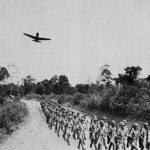Poonch and its surroundings were formerly a part of a Hindu principality in the state of Jammu and Kashmir under Dogra rule. Its political importance to Pakistan lies in its large Muslim population with ethnic affinities with dwellers across the line of control, and its economic importance in its large tracts of fertile agricultural land. It was once a profitable recruiting ground for the British Indian Army. Having failed to capture it in the 1947 and 1965 wars,1 Pakistan had made this a prestige issue, and this led to a third attempt to annex it in 1971. Its capture would give access to the gullies over the Pir Panjal range for infiltration into Kashmir Valley and enlarge the adjoining Haji Pir bulge, already in Pakistani possession, right up to the Poonch river.
The area is generally hilly and forested as it ascends the Pir Panjal range. The town and the valleys are about 900 metres above sea level, with mountain ridges rising to double this height, higher still nearer the range. Spurs run north to south from a ridge protruding from the Pir Panjal range. The old ceasefire line gave Pakistan the advantage of higher terrain to the extent that most of the area, including the airfield and parts of Poonch town, is overlooked from the Pakistani-held side. Most of the nullahs drain into the Poonch river, and prominent among them are Betar and Tanti-di-Tangar. The Betar irrigates agricultural tracts, works the turbines at Poonch power house and is the source of the town’s drinking water.
From 1947 onward, the defence of the Poonch area had been the responsibility of Headquarters 93 Infantry Brigade, commonly known as the Poonch Brigade. In the peculiar no peace no war situation prevailing in Jammu and Kashmir, Indian and Pakistani troops faced each other in close confrontation, manning picquets all along the line in the form of a hard crust, with some positions in depth in the rear. The defence potential of these picquets had been progressively increased over the years by laying mines and improving field fortifications, but their location and strength were known to the opposing side fairly accurately. Moreover, the roads from Hajira and Darwandi leading to Kahuta, the administrative base, from the Pakistani picquets were under observation from the Indian side, and any movement along them could be noticed. Two main roads led to Poonch from the Indian side, one from Surankot and the other from Mendhar via Krishna Ghati.
Its capture would give access to the gullies over the Pir Panjal range for infiltration into Kashmir Valley and enlarge the adjoining Haji Pir bulge, already in Pakistani possession, right up to the Poonch river.
The Pakistani plan for the capture of Poonch was hatched sometime in August or September 1971. To this end Akbar Khan, commanding Pakistan 12 Infantry Division in the area, assembled about two brigades and ran an operation-oriented exercise sometime in October in the Sudan valley in Pakistan occupied Kashmir, in terrain similar to that around Poonch. The exercise practised attack by infiltration based on Chinese tactics and ended on 16 October. In summing it up, Akbar Khan emphasised the security aspect to his officers and ordered all papers connected with it to be destroyed.
The force was later inducted opposite Poonch in the Kahuta area in November. The buildup compriscd constructing a road from Kahuta to the Pakistani forward picquets, deployment of about 14 to 16 artillery fire units, dumping ammunition, concentrating the two chosen brigades—26 Infantry and 2 POK-in the area, and relieving some regular and POK troops with Mujahids in the picquet line. Despite the spread of this buildup over a month and a half, our troops had noticed this unusual activity and the presence of Pakistan 26 Infantry Brigade in the Kahuta bulge. But they could not grasp whether it would be used against Poonch or Uri, across the Haji Pir Pass. It was known that Pakistan 7 Infantry Division had moved out of Peshawar, but its destination had not yet been ascertained.
Some personnel wearing 7 Div formation signs were noticed in Muzaffarabad, and this indicated that a part of it might be used in Jammu and Kashmir, and perhaps against Poonch. This apprehension led to the induction of 33 Infantry Brigade into the area in November to reinforce the Poorch sector, and eventually this proved a wise move. Its deployment was rather dispersed, with one battalion at Banawat near Poonch, another in the Krishna Ghati, and the third at Jarna Wali Gali, presumably as reserves in their respective subsectors.
The Pakistani intention appeared to be to capture Poonch and subsequently to develop operations with a view to securing all the territory up to the Pir Panjal range. The road from the Changal bridge to Kirni Gali was completed in record time just before the outbreak of hostilities. The construction of this road enabled Akbar Khan to deploy three medium and three field batteries well forward to support the operation.
…Akbar Khan, commanding Pakistan 12 Infantry Division in the area, assembled about two brigades and ran an operation-oriented exercise sometime in October in the Sudan valley in Pakistan occupied Kashmir, in terrain similar to that around Poonch.
The plan conceived and rehearsed for the capture of Poonch was certainly bold and ingenious. It visualised establishing a corridor in the crust of the Indian defences along the ceasefire line by capturing the defended localities on Shahpur and Danna features and at Guterian, along the Darangla nullah, about six to nine kilometres north and northeast of Poonch town, in the early hours of the night of 3/4 December, and later infiltrate two battalions through the corridor the same night.
One battalion was to occupy the heights dominating Mandi, and the other the Thanpir feature and Chandak ridge overlooking the Kalai bridge, thus severing Poonch from Sauji, Mandi and Surankot. In addition, one commando company was to be inducted much deeper to carry out extensive sabotage and disruption in the rear. On completion of this phase, the town was to be carried to enable Akbar Khan to stage a triumphant victory march. Throughout the above operation, the ceasefire line was to be kept alive all over so as to tie down Indian troops and conceal the initial thrust lines.
Soon after sunset on 3 December,2 the Indian forward localities were subjected to heavy artillery bombardment, and under its cover two brigades struck east and west of Darungali nullah simultaneously, 26 POK battalion attacking the Shahpur feature and Guterian and 7 POK battalion the Danna feature. 26 POK battalion contacted the Shahpur and Guterian defences about 2200 hours, and 7 POK battalion pushed back an outpost of the Danna defences, and both units issued signals for the infiltration to start. 9 POK and 16 POK battalions accordingly made for their respective objectives, led by subverted local guides.
The elements of 3 J&K Militia occupying the Thanpir feature were moved in the early part of the night to reinforce Shahpur and Guterian localities before the troops ordered to relieve them could reach the area. 9 POK battalion consequently found the Thanpir feature unoccupied except for a few administrative personnel like cooks, whom they murdered brutally. When the relieving troops arrived at Thanpir they were surprised by the Pakistanis already in occupation and suffered heavy casualities. 9 POK battalion later extended its operations to occupy the Chandak and Nangli spurs, thus dominating the Kalai bridge over the Poonch river.
These elements ambushed a 9 BSF patrol near the bridge next morning, and this gave the brigade commander the first indication of a deep infiltration in his sector. A prisoner revealed on interrogation that he could see a portion of Poonch town and a portion of the Mandi-Poonch road from the Chandak spur and spied a convey of 50 to 60 vehicles halted on the road. Since the artillery observers’ wireless sets had become defective, no fire could be brought down.
The Indian Army had not learnt to make good use of the offensive opportunities offered in war and remained a defence-oriented organisation.
16 POK battalion had likewise made its way to its objectives and managed to secure the Mandi heights dominating the bridge, thus cutting off the Sauji and Loran valleys and the northern portion of the Poonch Brigade sector. These elements were able to raid Shakhlu and lay an ambush at Khot, but with little success.
Meanwhile, after the start of the Pakistani attack on 3 December, the Indian divisional commander moved his reserve battalion from Jarna Wali Gali into the Poonch sector around midnight. On discerning the ambush near Kalai bridge, this battalion was given the task of clearing the enemy from Chandak spur and Thanpir and opening the Surankot-Kalai-Poonch road. Traffic on this road having been interrupted, the much-needed ammunition for the Poonch battle was moved along the Mendhar-Krishan Ghati-Poonch road, which remained operative throughout. The prisoner recounted having seen Indian troops digging on the lower slopes of the Chandakttspur, but neither side actively attempted to eject the other.The enemy artillery was not in communication, and this passive confrontation continued till late in the afternoon of 4 December, when the Pakistani company was ordered to aban-don its position and rejoin the remainder of its battalion at Thanpir. It consequently started withdrawing after dusk. The Indian troops, although very near, failed to close in or take action to prevent the Pakistanis from getting away. The Pakistanis had gone without food for some 30 hours, their ammunition was running short, and their morale was low. A more enterprising commander could have rounded up the whole lot without much difficulty.The Pakistanis marched the whole night along the Nangli and Chandak spurs and reached Thanpir by 1000 hours on 5 December. The successive attacks on Danna feature from two directions—a battalion each from the west and the east—had failed because of our very effective artillery fire and the efficacy of our minefields. The attacks were repeated in spurts during the day of 4 December and night of 4/5 December. By daybreak of 5 December it was apparent that the Pakistani offensive had shot its bolt. The attack on the Guterian and Shahpur complexes had also failed, thus leaving the infiltration force without replenishments. Their ammunition was running low. The conditions at Thanpir were chaotic. The commanding officer and his medical officer were killed, the battery commander in support had taken over, and the mere fact that the routes behind were insecure and the possibility of a linkup remote had caused demoralisation all round.
9 POK battalion received orders to exfiltrate about 1500 hours and abandoned Thanpir an hour later. The Indians moved in soon afterwards, but by then the Pakistanis had gone. They shed much arms and equipment in withdrawal and reached Kirni village about 0100 hours on 6 December. 16 POK battalion also withdrew the same night, almost using the same route, and this resulted in frequent exchanges of fire between these two battalions. The attacks on the Danna, Guterian and Shahpur complexes were called off on 7 December, and the infiltration troops fell back except for some elements of Liaquat Commando Company. 26 POK battalion fell back on Neza Pir, and there was feverish activity to prepare a defended area by laying mine-fields and extensive digging of defended localities.






The Author should have mentioned about how Bengali Offrs mainly gunners let down the infiltration bid. 25 Div captured a few
I AM RESIDENT OF POONCH TOWN, I ALWAYS PROUD ON OUR GREAT INDIAN
ARMY,WHICH ALWAYS GUARDS POONCH TOWN FROM EVIL DESIRE OF
PAK ARMY TO CAPTURE POONCH TOWN.
PEOPLE OF POONCH ARE PROUD OF INDIAN ARMY
I LIKE THE REAL STORY POONCH WAR 1971 WRITTEN BY GREAT AUTHOR
MAJ.GEN.SUKHWANT SINGH
AJAY KUMAR BHALLA